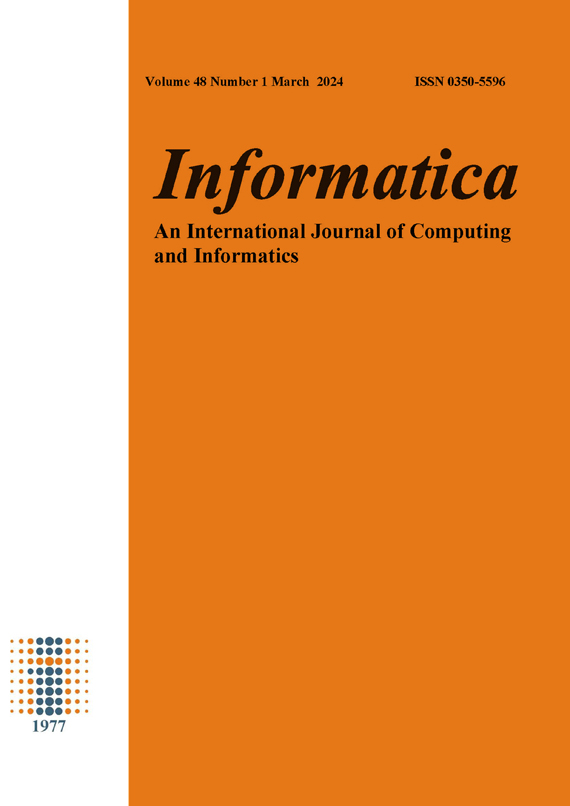Generating Lyrics Using Constrained Random Walks on a Word Network
DOI:
https://doi.org/10.31449/inf.v48i1.3366Abstract
In the paper we present an approach for automatic lyrics generation. From the American National Corpus of written texts we build a Word Network, which encodes wordsequences. Lyrics are then generated by performing a constrained random walk over the Word Network. The constraints include the structure of the generated sentence, the rhythm of the lines of the stanza or the rhymes of the stanza itself. Lyrics are generated using each constraint individually and also using all three constraints at the same time. We tested the single constraint strategies using a toy example, while the results of the joint strategy were subject to human review. While the given properties of the toy example, were kept in the results, replicating the toy example perfectly proved a difficult task. The results of the questionnaire showed that lack of a deeper meaning and strange capitalization were the main reasons that our results did not appear as though they were written by a human.References
Assonance rhyme definitions. https://www.dictionary.com/browse/assonance. Accessed: 06-06-2020.
Consonant rhyme definitions. https://www.thefreedictionary.com/consonant+rhyme. Accessed: 06-06-2020.
Open ANC — Open American National Corpus. http://www.anc.org/data/oanc/. Accessed: 06-06-2020.
Perfect rhyme definition. https://www.collinsdictionary.com/dictionary/english/perfect-rhyme. Accessed: 06-06-2020.
Song Lyrics — Kaggle. https://www.kaggle.com/paultimothymooney/poetry. Accessed: 08-05-2020.
Barbieri, G., Pachet, F., Roy, P., and Degli Esposti, M. Markov Constraints for Generating Lyrics with Style. In Ecai(2012), vol. 242, pp. 115–120.
Cortes, C., and Vapnik, V. Support-vector networks. Machine learning 20, 3(1995), 273–297.
Oliveira, H. G. PoeTryMe: a versatile plat-form for poetry generation. Computational Creativity, Concept Invention and General Intelligence 1(2012), 21.
Oliveira, H. G. Tra-la-lyrics 2.0: Automatic generation of song lyrics on a semantic domain. Journal of Artificial General Intelligence 6, 1 (2015), 87–110.
Oliveira, H. G. A survey on intelligent poetry generation: Languages, features, techniques, reutilisation and evaluation. In Proceedings of the 10th International Conference on Natural Language Generation(2017), pp. 11–20.
Rumelhart, D. E., Hinton, G. E., and Williams, R. J. Learning internal representations by error propagation. Tech. rep., California Univ San Diego La Jolla Inst for Cognitive Science, 1985.
Downloads
Published
Issue
Section
License
I assign to Informatica, An International Journal of Computing and Informatics ("Journal") the copyright in the manuscript identified above and any additional material (figures, tables, illustrations, software or other information intended for publication) submitted as part of or as a supplement to the manuscript ("Paper") in all forms and media throughout the world, in all languages, for the full term of copyright, effective when and if the article is accepted for publication. This transfer includes the right to reproduce and/or to distribute the Paper to other journals or digital libraries in electronic and online forms and systems.
I understand that I retain the rights to use the pre-prints, off-prints, accepted manuscript and published journal Paper for personal use, scholarly purposes and internal institutional use.
In certain cases, I can ask for retaining the publishing rights of the Paper. The Journal can permit or deny the request for publishing rights, to which I fully agree.
I declare that the submitted Paper is original, has been written by the stated authors and has not been published elsewhere nor is currently being considered for publication by any other journal and will not be submitted for such review while under review by this Journal. The Paper contains no material that violates proprietary rights of any other person or entity. I have obtained written permission from copyright owners for any excerpts from copyrighted works that are included and have credited the sources in my article. I have informed the co-author(s) of the terms of this publishing agreement.
Copyright © Slovenian Society Informatika








